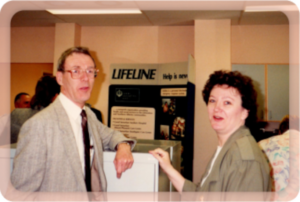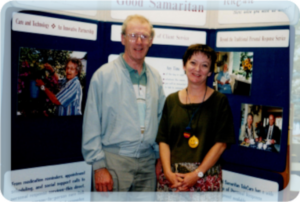


This past April, the Good Samaritan Society was saddened to learn of the passing of John Robert Lymer, known to many Good Samaritans simply as, Jack. The beloved husband, father, grandfather, and uncle was 87 years old, and had been a constant presence and guiding force within the Society for over five decades.
Jack Lymer’s career as a Good Samaritan began on July 1, 1967, when he became the Head Pharmacist for the Good Samaritan Auxiliary Hospital (now the Dr. Gerald Zetter Care Centre). After becoming a trusted and respected figure within the Hospital over the subsequent years, Lymer became the Hospital Administrator in 1972. Before long, he was promoted to Executive Vice President of the Society, working closely with then-President and CEO Phil Gaudet. Lymer remained a valued member of the leadership team until his retirement in 1994.
Although Jack’s contributions to the Society were vast, he will perhaps be best remembered for his role in the creation of TeleCare. He was instrumental in identifying the need for a 24-hour emergency response service, and worked tirelessly to make the vision a reality. Good Samaritan Lifeline began accepting subscribers in 1987, and as the program evolved into the TeleCare we know today, Jack remained at the forefront. Even after his retirement, Jack remained a dedicated volunteer for TeleCare, logging nearly 2000 hours installing systems between 1995 and 2019. His kind demeanour and helpful nature provided peace of mind for countless clients while setting the benchmark for Servant Leadership and client-centred care throughout the TeleCare program. In 2010, he was honoured as a recipient of the Seniors and Community Support Award from the Government of Alberta.
With 52 years of service to the Good Samaritan Society, it’s truly impossible to overstate Jack’s selfless dedication to others. His kindness, generosity, and embodiment of Good Samaritan’s values will be remembered fondly by those who knew him, while his profoundly positive impact on the Society will be felt forever.
This article originally appeared in the Fall 2022 issue of the Journey. Read this and other issues of the Journey here.

